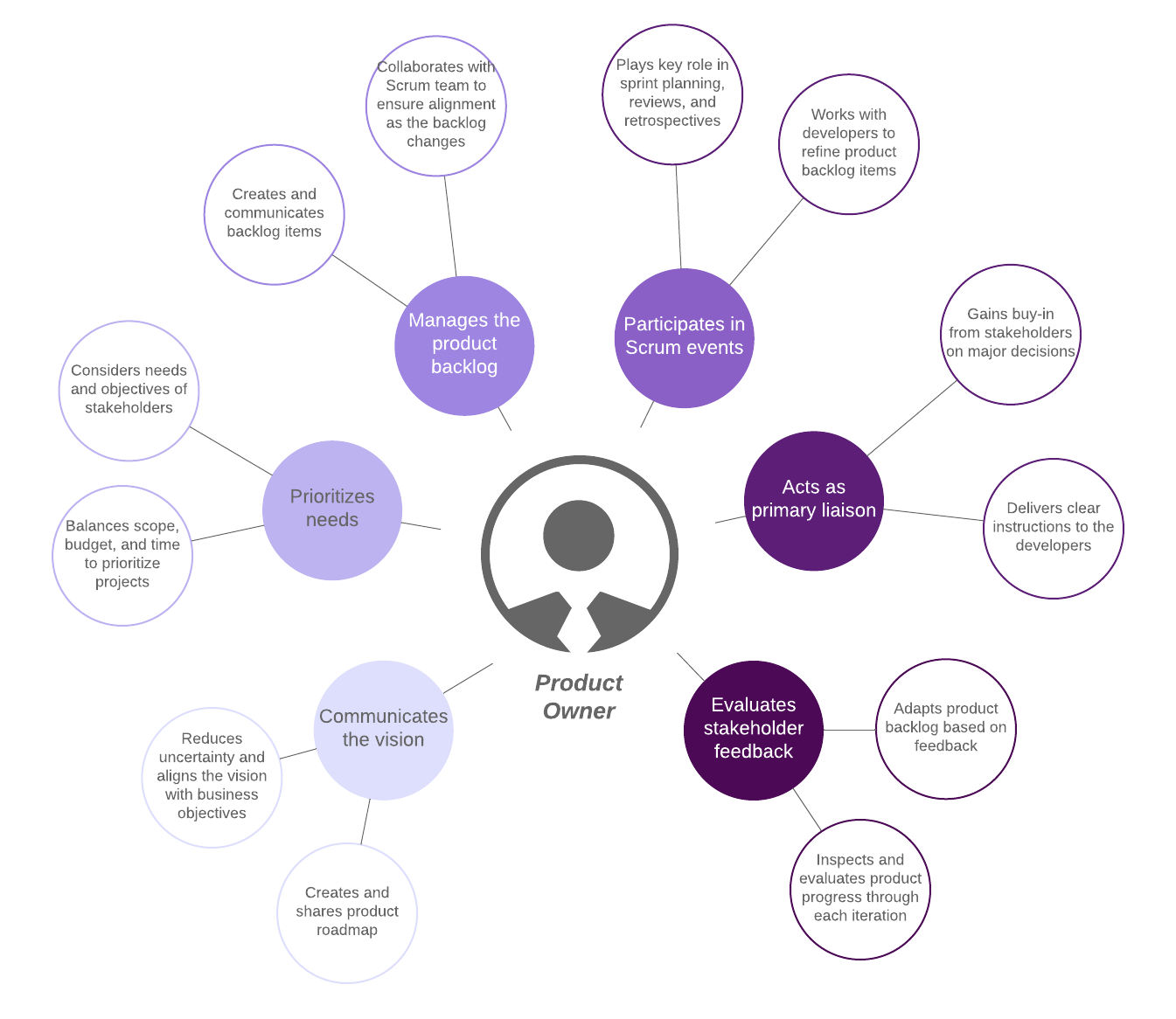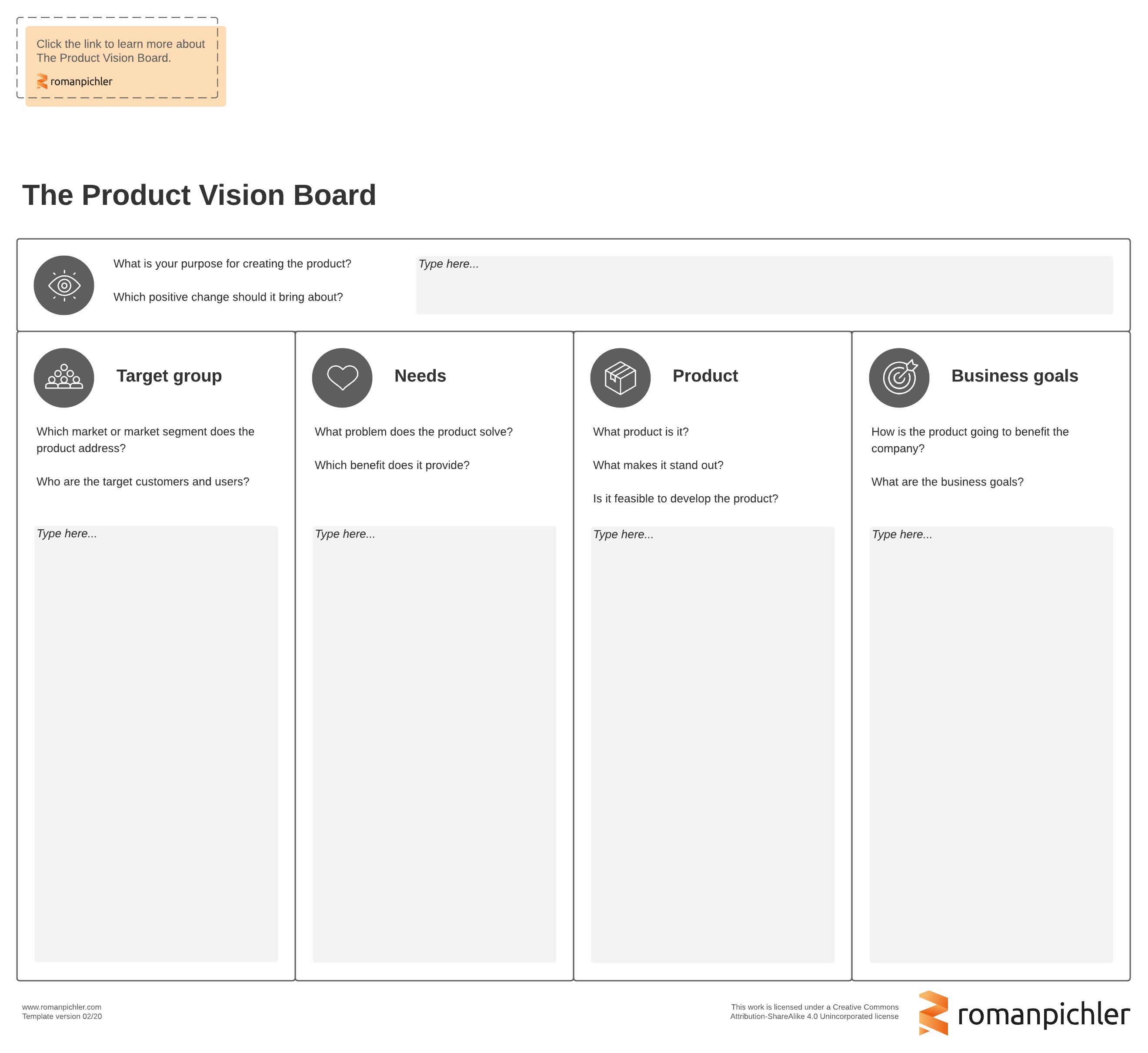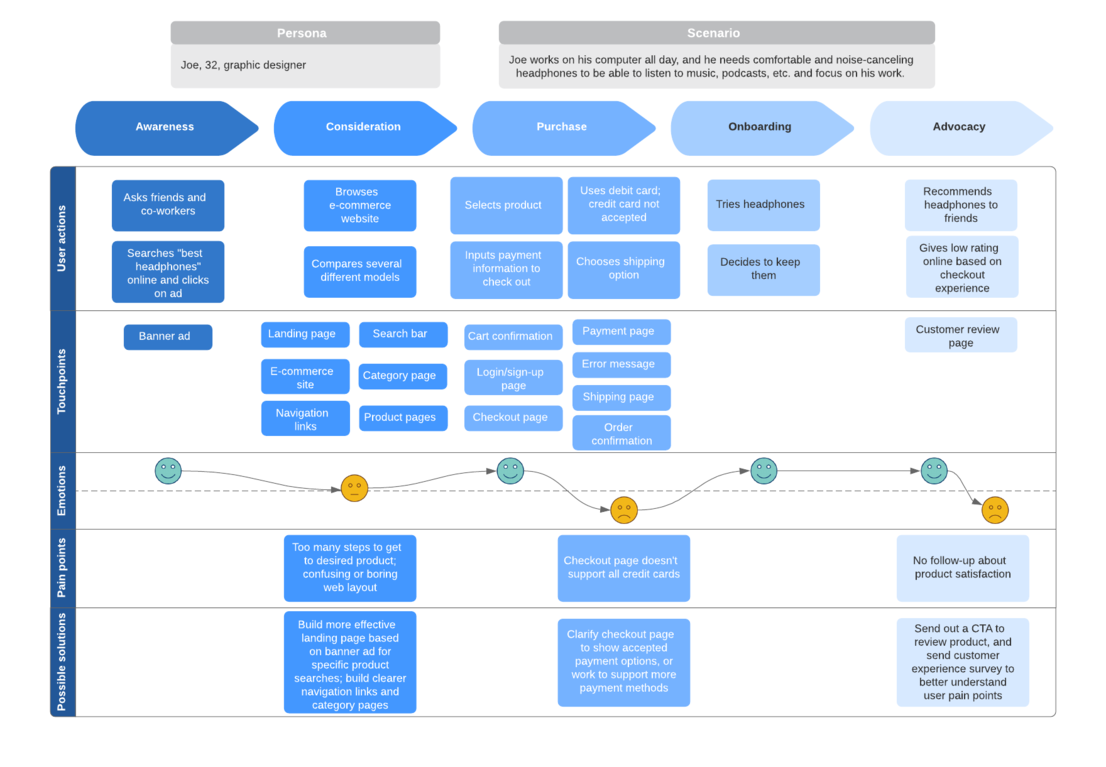
6 key product owner responsibilities
Reading time: about 6 min
Product owners are at the center of every effort to create and deliver customer value. But what activities are they actually involved in?
Though a product owner’s role can vary depending on the environment, they typically have several key roles and responsibilities covering everything from business strategy to product design. They are responsible for maximizing the product and business value through continuous product backlog management.
In this blog post, we will review the seven key roles and responsibilities of a Scrum product owner.
What is a product owner?
At the most basic level, an Agile product owner, or Scrum product owner, is accountable for representing the customer to a Scrum team and maximizing the value of the products created by a Scrum team.
According to the 2020 Scrum Guide, how the product owner maximizes product value often varies across teams and organizations. Regardless, the product owner’s success depends on whether or not the organization respects their decisions.

Product owner role
In order to effectively maximize the value of a product, the Agile product owner is involved in a variety of functions, including business strategy, product design, market analysis, and aspects of project management. While the product owner may wear many hats, the Scrum Guide notes that “the product owner is one person, not a committee.”
One day a product owner will need to access their deep well of market knowledge to strategize and present their vision to stakeholders. On another day, they will need to get hands-on in collaborating with the team in order to meet their sprint goals.
6 key product owner roles and responsibilities
1. Communicating the vision
The Agile product owner works with stakeholders to create a vision of the product they wish to create and to repeatedly communicate that product vision.
Product owners reduce uncertainty by communicating with a variety of stakeholders, including customers, business managers, and the development team to make sure the goals are clear and the vision is aligned with business objectives.
A product owner’s communication helps the team maintain clarity around the product vision despite the changing and fast-paced nature of Agile product development. Everyone needs to be on the same page in order to work together effectively.
A product owner provides additional context around the product vision by creating and sharing a product roadmap. The product roadmap is a high-level, strategic visual summary that outlines the vision, priorities, and direction for the product offering over time. It is used as both a summary of progress as well as a strategic guide for stakeholders to reference.

2. Managing the product backlog
One of the most important responsibilities of a Scrum product owner is managing the product backlog. This artifact is an ordered list of items the Scrum team needs to complete to achieve the strategic direction as defined in the product roadmap.
The product owner’s responsibility is to develop and communicate the product goal, create and clearly communicate product backlog items, and order the backlog to maximize business value. A product owner generally does this work in collaboration with others familiar with the customer’s needs, including members of the Scrum team.
The product backlog isn’t a static to-do list though. It is a live document that should be continually updated as a team’s understanding of the product evolves.
Because the product backlog will change frequently, the product owner must make the list transparent, accessible, and available to all stakeholders (particularly Scrum team members) to ensure continuous alignment.
Learn more about managing your product backlog.
Learn how3. Prioritizing needs
Another key role of the product owner is to prioritize needs. In other words, they must juggle scope, budget, and time, weighing priorities and making trade-offs according to the needs and objectives of stakeholders.
For example, if the scope of the next release changes, this impacts both time and budget. Managing these trade-offs is a process of directing business activities to achieve the best results possible. The product owner must communicate an understanding of these trade-offs to management and other stakeholders, and advocate for positioning the levers in a way that optimizes the potential for desired outcomes.
They will frequently face situations where the best decision is to decline a feature request or change in order to maintain focus on the vision and product roadmap. If the product owner doesn’t have the authority to make these decisions, there is a risk of deviating from the roadmap, bloating the product, and overwhelming the team.
4. Participating in Scrum events
With the vision, strategy, and product priorities ready, the product owner should spend a significant amount of time collaborating with the team on the product. They are a key participant at the Scrum events, including sprint planning, sprint reviews, sprint retrospectives, and product backlog refinement.
During sprint planning, the Agile product owner proposes how the product could be improved in the upcoming sprint based on stakeholder feedback. The product owner then works with the developers to define a sprint goal, determine what backlog items to include in the sprint, and discuss how the team will complete the chosen work. At sprint planning and throughout the sprint, the product owner may work with the developers to refine the product backlog items as needed.
The product owner also plays a key role in the sprint review, in which the Scrum team demonstrates their progress from the sprint to relevant stakeholders. At the close of the sprint, the product owner participates in the sprint retrospective with the entire Scrum team, in which they inspect the last sprint’s effectiveness and discuss improvements.
5. Acting as the liaison between teams and stakeholders
The product owner is the primary communicator and link between stakeholders and teams. As such, they have to be expert communicators, making sure there’s buy-in from stakeholders on all major decisions and strategies and clear instructions and deliverables for the developers.
The successful Scrum product owner will be an expert at understanding and anticipating the client’s needs to more effectively manage the product roadmap and product backlog.
Their deep market knowledge and communication skills allow them to anticipate problems or needs and address them.
A product owner can better understand their customer with customer journey mapping. These visuals create a shared vision for the customer experience. You'll save time and effort so you can put all your energy into solving your customers’ problems and wowing your clients.


Get more tips on working with stakeholders from product management expert Roman Pichler.
Read the blog6. Evaluating feedback at each iteration
Because the product owner is accountable for the final product, they take a primary role in inspecting and evaluating product progress through each iteration. The product owner gathers feedback at each iteration and adapts the product backlog based on that feedback.
Agile product owners wear many hats, so they need tools and solutions that can adapt to their changing roles as quickly as they do.
Visuals can assist your scrum team through every step of the development process, making it easy to transition from outlining the customer journey and mocking up product designs to mapping product dependencies and sharing your work with stakeholders.

Take the next step and build your scrum team with these key roles.
Learn howAbout Lucidchart
Lucidchart, a cloud-based intelligent diagramming application, is a core component of Lucid Software's Visual Collaboration Suite. This intuitive, cloud-based solution empowers teams to collaborate in real-time to build flowcharts, mockups, UML diagrams, customer journey maps, and more. Lucidchart propels teams forward to build the future faster. Lucid is proud to serve top businesses around the world, including customers such as Google, GE, and NBC Universal, and 99% of the Fortune 500. Lucid partners with industry leaders, including Google, Atlassian, and Microsoft. Since its founding, Lucid has received numerous awards for its products, business, and workplace culture. For more information, visit lucidchart.com.
Related articles
5 steps to build a next-level product roadmap in Lucidchart
Use this guide to build a product roadmap in Lucidchart. Includes instructions on how to link data, use smart containers, and add conditional formatting. Roadmap templates included!
Product positioning: Key elements and strategies for success
Before you launch a product, you need to establish where it fits in the market, how it’s different from existing products, and why your customers should care. This is called product positioning—and this article will show you how to approach it.
